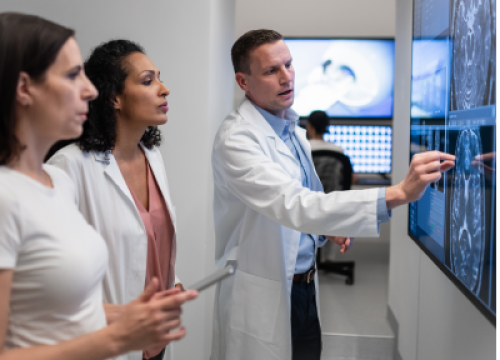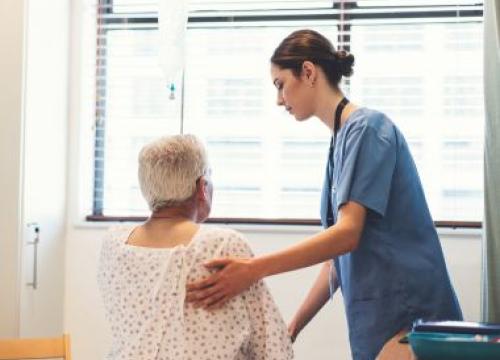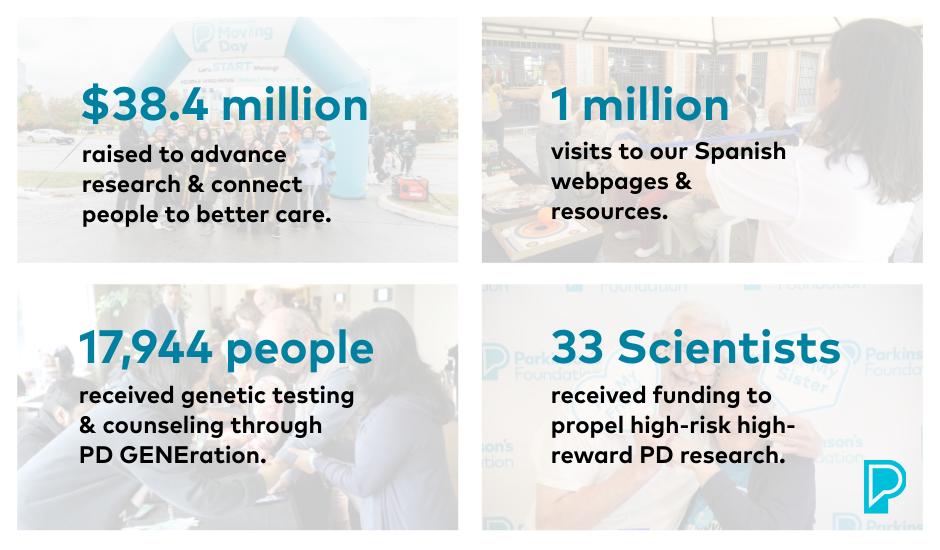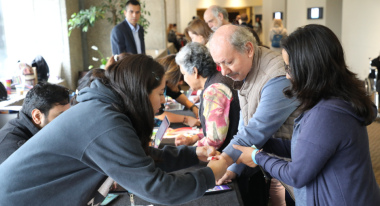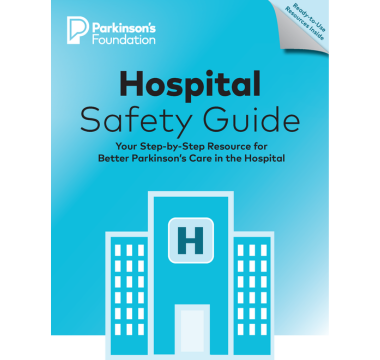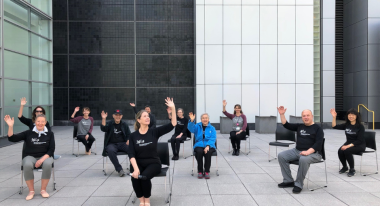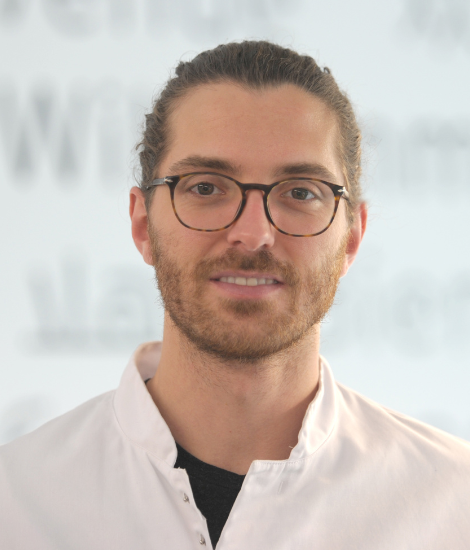Improving Parkinson’s Outcomes: Harnessing AI to Evolve Care & Diagnosis

Nami Shah, MD, is passionate about improving in-hospital and outpatient care for people with Parkinson’s disease (PD). As a Parkinson’s Foundation Wesley G. McCain Movement Disorders Fellow at the University of Rochester Medical Center, a Parkinson’s Foundation Center of Excellence, she is examining how electronic medical record alerts can reduce medication errors during hospital stays.
Dr. Shah is also part of a study evaluating how AI-technology can identify Parkinson’s symptoms and eventually aid in the diagnosis of PD. And, she is a sub-investigator for a qualitative interview study on freezing of gait.

We spoke to Dr. Shah about her exciting work in the PD field, and how working with the Parkinson’s community inspires her.
"I'm so grateful to have the support of the Parkinson's Foundation. It's critical to have a foundation like this invested in supporting Parkinson's research and in improving care."
- Nami Shah, MD
What led you to Parkinson’s research?
Toward the end of my neurology training, I spent a couple weeks rotating through the movement disorders clinic at the University of Rochester, and that really solidified my decision to not only go into movement disorders and work with patients with Parkinson’s, but to also do research in that area. It was a humbling experience to give a diagnosis of Parkinson’s disease, and to hear patient stories about dealing with the disease each day and during hospitalizations.
Sometimes patients told me stories about their great care experiences, and the not great experiences too. These stories are what increased my interest in doing research that primarily focuses on trying to improve care for patients with Parkinson’s in the hospital setting and improving some of the tools used in research, so they better reflect what is important to patients and their actual experience with the disease.
How has this fellowship impacted your career?
It’s been critical to my training. When I completed my neurology residency, I received some basic training in how to take care of patients with Parkinson’s and identify that they have the disease, but this fellowship has really made me appreciate the nuances of Parkinson’s. It has given me confidence in my ability to diagnose Parkinson’s and differentiate it from related disorders.
How are you helping reduce medication errors in hospital settings for people living with Parkinson’s?
I've been working on this project for over a year now, and we're almost done analyzing results. A group of researchers, before my time, introduced a best practice advisory —an electronic medical alert that is triggered when patients carry a diagnosis of Parkinson's. So, if someone with Parkinson’s is admitted to the hospital and a provider tries to order a contraindicated medication, the alert tells the provider to think about the risk versus benefit of ordering that medication. My part in the project was to look at how this warning system impacted hospital stays and affected the rate of complications.
Advocate for your best care when in the hospital for an unplanned visit
Explore the Hospital Safety Guide
Download the hospital safety guide
The initial analysis shows that it really does have an impact. Not only did the warning system drastically reduce the number of orders of that kind, but it also showed increases in length of stay for patients when they received these contraindicated medications. I think it's promising because it's such a simple intervention, but it can really make a difference for patients with Parkinson’s during hospital stays.
I'm also working on designing an order set that makes it easier to identify and order time-sensitive medications for patients with Parkinson’s in the hospital. The hope is to make this process easier for providers, especially those who are not as familiar with Parkinson's, and to decrease the risk of increased rigidity, falls, and swallowing difficulties that patients can experience due to delays in administration of these medications.
Can you explain your research on how AI can help identify symptoms and diagnose PD?
This is still in the early stages, but I think it is exciting to involve AI in Parkinson’s diagnosis. The study I am involved in is having us code patient videos to identify important symptoms that lead to a Parkinson’s diagnosis. The goal is to use this information to train AI technology so it can help with diagnosis and maybe use it as an alerting technique for providers who may not be as familiar with Parkinson’s.
Are you working on any other Parkinson’s research?
I am serving as a sub-investigator for a qualitative interview study that utilizes novel symptom mapping techniques to evaluate meaningfulness of a novel Freezing of Gait Patient Reported Outcome Assessment, developed by an international consortium of specialists.
This study is looking at using a symptom mapping technique to illuminate symptoms of importance and interest to patients with Parkinson’s, particularly how they experience freezing of gait. Once we create the map of symptoms, we’re using that to assess whether a specific patient-related outcome measure that has been created in this group is appropriate, whether it is identifying the right symptoms for freezing of gait and whether it accurately reflects the patient experience. The goal is to determine if this tool is good, and if it is good, use it in future research studies to assess therapies that might be curative.
What gives you the greatest hope regarding your Parkinson’s-related work?
The people with Parkinson’s that I work with in the clinic and in my research projects inspire me. Not only are they incredibly brave when dealing with the daily challenges that Parkinson’s brings, they are also so generous with their time and willingness to help in research that would benefit others in the future. If they weren’t so kind or willing to participate, Parkinson’s care would not have advanced as much as it has.
Find a movement disorders specialist at Parkinson.org/Search or call the Parkinson's Foundation Helpline at 1.800.4PD.INFO (1-800-473-4636).
Related Materials
Related Blog Posts
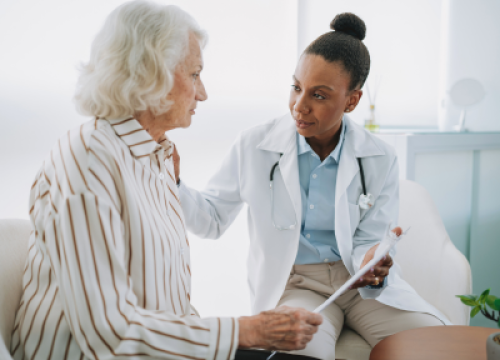
Neuro Talk: Newly Diagnosed

Meet a Researcher Working to Make Adaptive DBS More Effective
